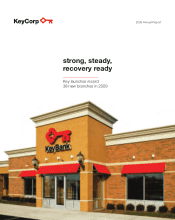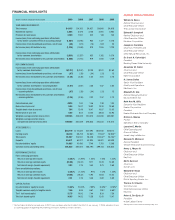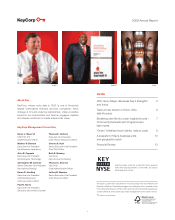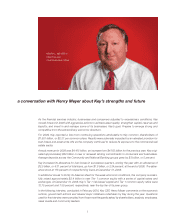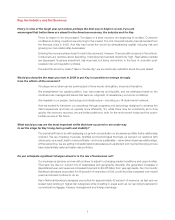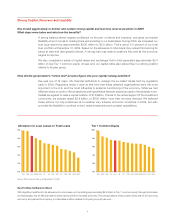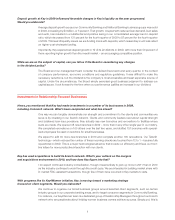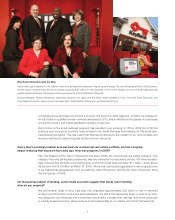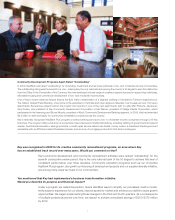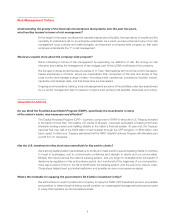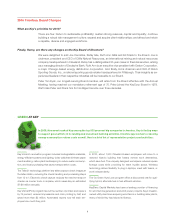KeyBank 2009 Annual Report Download - page 5
Download and view the complete annual report
Please find page 5 of the 2009 KeyBank annual report below. You can navigate through the pages in the report by either clicking on the pages listed below, or by using the keyword search tool below to find specific information within the annual report.
3
Key, the Industry and the Economy
Henry, in view of the tough year just ended, perhaps the best way to begin is to ask if you are
encouraged that better times are ahead for the American economy, the industry and for Key.
There is reason to be encouraged. The signs of a slow recovery are beginning to surface. Consumer
confidence is rising. Investors are returning to the market. The U.S. financial industry has rebounded from
the financial crisis in 2008. And Key has turned the corner by strengthening capital, reducing risk and
growing our core relationship businesses.
Entering the recovery phase doesn’t mean fully recovered, however. There are still concerns in the outlook.
Consumers are cautious about spending. Unemployment remains stubbornly high. Real estate markets
are depressed. Business investment has improved, but lacks momentum in the face of uncertain post-
recession tax and regulatory policies.
Provided the economy doesn’t take a “double dip,” we are cautiously optimistic about the year ahead.
Would you describe the steps you took in 2009 to put Key in a position to emerge strongly
from the effects of the recession?
The steps we’ve taken can be summarized in three words: strengthen, invest and transform.
We strengthened our capital position, loan loss reserves and liquidity, and we addressed head-on the
credit and risk management issues that were an outgrowth of recessionary economic conditions.
We invested in our people, technology and infrastructure – including our 14-state branch network.
And we worked to transform our operations through programs and technology designed to enhance the
client experience and help us operate more efficiently. So, while there may be uncertainty as to how
quickly the economy recovers, we are better positioned, both for the environment today and the oppor-
tunities we see in the future.
What would you say are the most important shifts that have occurred or are under way
to set the stage for Key’s long-term growth and stability?
The central shift has to do with reshaping our growth concentration on a business portfolio that is relationship
oriented. We are investing in people, facilities and technologies that help us cement our relations with
clients and, as a result, lead to more profitable – and more sustainable – value-driven business relationships.
At the same time, we are exiting nonrelationship businesses such as student and marine financing and we
have substantially reduced higher-risk portfolios.
Do you anticipate significant changes ahead or is the mix of businesses set?
Our business is dynamic and we will continue to adjust to changing market conditions and opportunities.
That said, we like our current mix of businesses and geographic diversity. We generated increases in
deposits last year, and revenues increased 6 percent to $4.415 billion from year-ago levels. Our Community
Banking businesses accounted for 56 percent of revenues in 2009, a ratio that has increased over recent
years and should continue to do so.
Key’s National Banking businesses accounted for approximately 42 percent of revenues, as last year we
scaled back lending in higher-risk categories while investing in areas such as our servicing business for
commercial mortgages, treasury management and foreign exchange.

